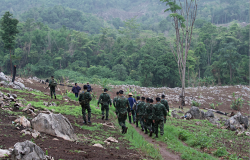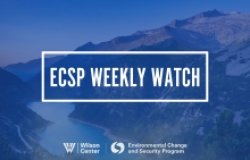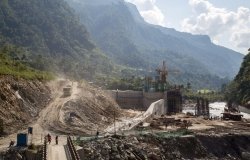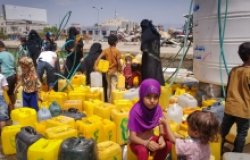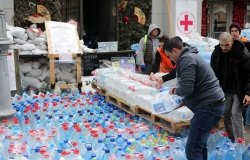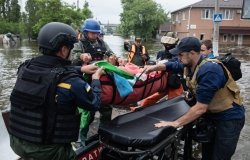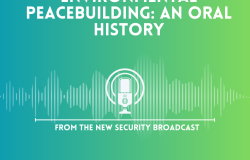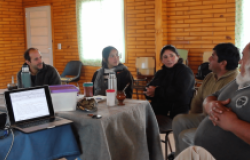"Water Stories" Multimedia Website Launched for World Water Day
MARCH 2006--Download Research, Documentaries from www.wilsoncenter.org/water
The numbers are staggering: more than 1 billion without safe water, more than 2.5 billion without sanitation. "Water Stories"—a new multimedia website from the Woodrow Wilson Center's Navigating Peace Initiative—puts faces and names to these numbers. Launched in time for the 4th World Water Forum in Mexico City and World Water Day (March 22), "Water Stories" screens compelling documentaries that explore Mexico's struggle to provide clean water and adequate sanitation to its growing population. In addition, visitors to "Water Stories" can download research commissioned by the initiative on expanding opportunities for small-scale water and sanitation projects in developing countries.
The four documentaries by J. Carl Ganter chronicle various clean water and sanitation endeavors in resource-strapped areas of Mexico. Similar struggles to bring fresh water and sanitation occur every day in all parts of the developing world. "Dry Sanitation" tracks one village's attempt to stave off health and sewage problems with low-tech composting toilets. In "Rainwater Harvesting," residents filter rooftop water into safe drinking water. In "Batallones Rojos," the region's families desperately need more water than the two hours per day they currently receive. And in "Colonia San Miguel," the Silvas struggle to keep their family of seven healthy, fed, and clothed while using less than 200 gallons of water per week.
Research papers commissioned by the initiative shed light not only on the challenges of improving access to safe water and sanitation, but also the possibilities afforded through innovation and cooperation:
- In "Household Water Treatment and Safe Storage Options in Developing Countries," authors Daniele S. Lantagne, Robert Quick, and Eric D. Mintz of the Centers for Disease Control summarize five of the most common household water treatment and storage options—chlorination, filtration (biosand and ceramic), solar disinfection, combined filtration/chlorination, and combined flocculation/chlorination—and describe implementation strategies for each;
- John Oldfield's "Community-Based Approaches to Water and Sanitation" reviews small-scale and rural water and sanitation projects, and highlights best, worst, and breakthrough practices in the sector, drawn from his interviews with leading water sector NGOs;
- "Low-Cost Sanitation" by Alicia Hope Herron examines whether low-cost sanitation options like pit latrines, dehydration systems, pour flush latrines, aquaprivies, and septic tanks are cost-effective, sustainable, and likely to be accepted by users; and
- J. Carl Ganter's piece, "Navigating the Mainstream: The Challenge of Making Water Issues Matter," argues that forming a movement to address the global freshwater crisis requires a new paradigm for social change—one that recognizes the needs and unites the strengths of citizens, leaders, NGOs, and especially the news media.
The "Navigating Peace: Forging New Water Partnerships" initiative, launched by the Environmental Change and Security Program and funded by the Carnegie Corporation of New York, brings together experts and practitioners to reframe stale debates and generate fresh thinking on critical water problems.
Related Program

Environmental Change and Security Program
The Environmental Change and Security Program (ECSP) explores the connections between environmental change, health, and population dynamics and their links to conflict, human insecurity, and foreign policy. Read more
